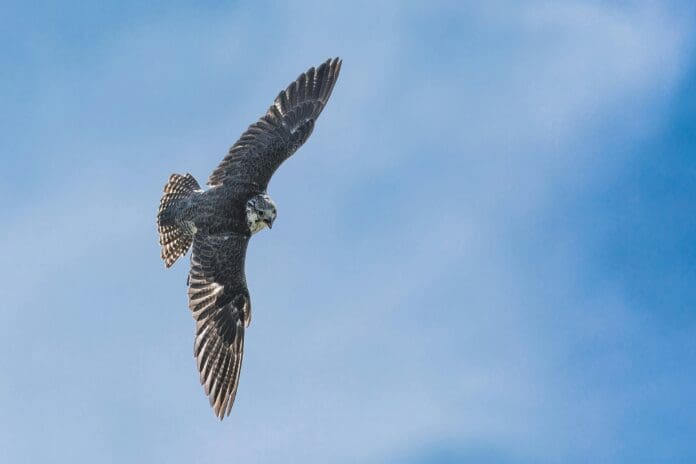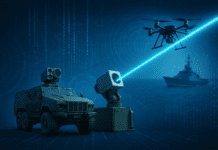This post is also available in:
 עברית (Hebrew)
עברית (Hebrew)
A new version of a bird-inspired flying robot has demonstrated the ability to take off without assistance and sustain flight at lower speeds—an advance that moves bio-inspired aerial robotics closer to mimicking natural flight in larger vertebrates.
Described in a recent Science Advances study, RoboFalcon 2.0 builds on an earlier prototype developed in 2021 that was capable of flapping-wing flight but required external help for takeoff and struggled at low speeds. The new version, weighing 800 grams, integrates a reengineered flapping mechanism that combines three distinct wing motions—flapping, sweeping, and folding—into a single coordinated movement per wingbeat, according to TechXplore.
This flight strategy, often referred to as FSF (Flapping, Sweeping, Folding), more closely mirrors the way birds and bats control their wings, especially during takeoff and low-speed maneuvering. In contrast, most existing flapping-wing robots use a simplified, single-axis movement inspired by insects, which is less effective for heavier or larger-scale flight.
By developing a reconfigurable mechanical structure with decoupling components, the RoboFalcon 2.0 can dynamically adjust wing position in-flight. The flapping motion provides lift, while the sweeping and folding angles can be tuned to control pitch and roll. Notably, the robot is able to perform bird-like takeoffs by executing powerful downward strokes combined with compact upstrokes.
The researchers validated the system using wind tunnel experiments, flight simulations, and outdoor testing. Results showed that increasing the sweep angle significantly improved both lift and pitch control. Real-world tests confirmed the robot’s ability to take off unassisted using the FSF configuration.
While the updated design addresses some of the key limitations of the original RoboFalcon—particularly its reliance on external support—the team acknowledges areas for further refinement. These include adding a tail elevator to improve stability at higher speeds and addressing the current lack of yaw control. The energy efficiency of takeoff also remains below that of natural flyers or smaller robotic counterparts.
Despite these limitations, the study presents RoboFalcon 2.0 as a meaningful step forward in avian-inspired robotics, offering new approaches to low-speed flight control and self-initiated aerial movement for medium-scale flying robots.


























